Mastering the Unique Chic Scandinavian Interior Design Style

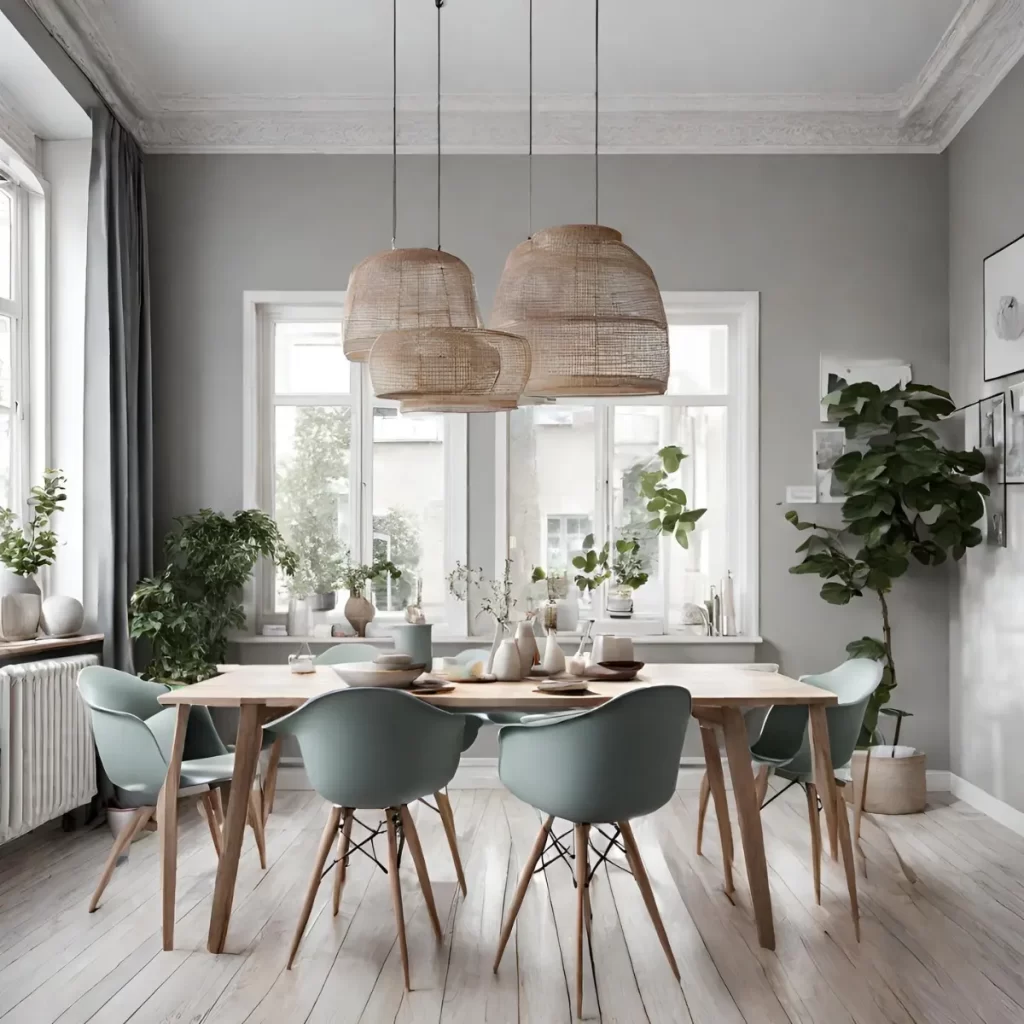
Table of Contents
Scandinavian interior design, often simply referred to as “Scandinavian design,” is a widely celebrated and enduring style that has gained immense popularity on a global scale.
Known for its timeless appeal, this design philosophy has resonated with people from various corners of the world, offering a harmonious blend of simplicity, functionality, and aesthetics.
Scandinavian interior design is a reflection of the Nordic countries, including Denmark, Sweden, Norway, and Finland, where it originated.
Its influence has transcended geographical boundaries to captivate homeowners and interior enthusiasts everywhere. This is no surprise, considering the universal allure of its clean lines, neutral color palettes, and strong connection to nature.
As we delve into the world of Scandinavian interior design, we’ll explore its core principles, key elements, and practical tips for achieving this style.
Whether you’re a design aficionado or simply looking to create a serene and inviting living space, Scandinavian design offers valuable insights and inspiration that have made it a timeless favorite among homeowners around the globe.
I. The Core Principles of Scandinavian Design


Scandinavian interior design, at its heart, is a celebration of simplicity and functionality.
This design philosophy has garnered worldwide recognition for its ability to transform living spaces into tranquil and aesthetically pleasing environments.
Simplicity in Scandinavian Interior Design:

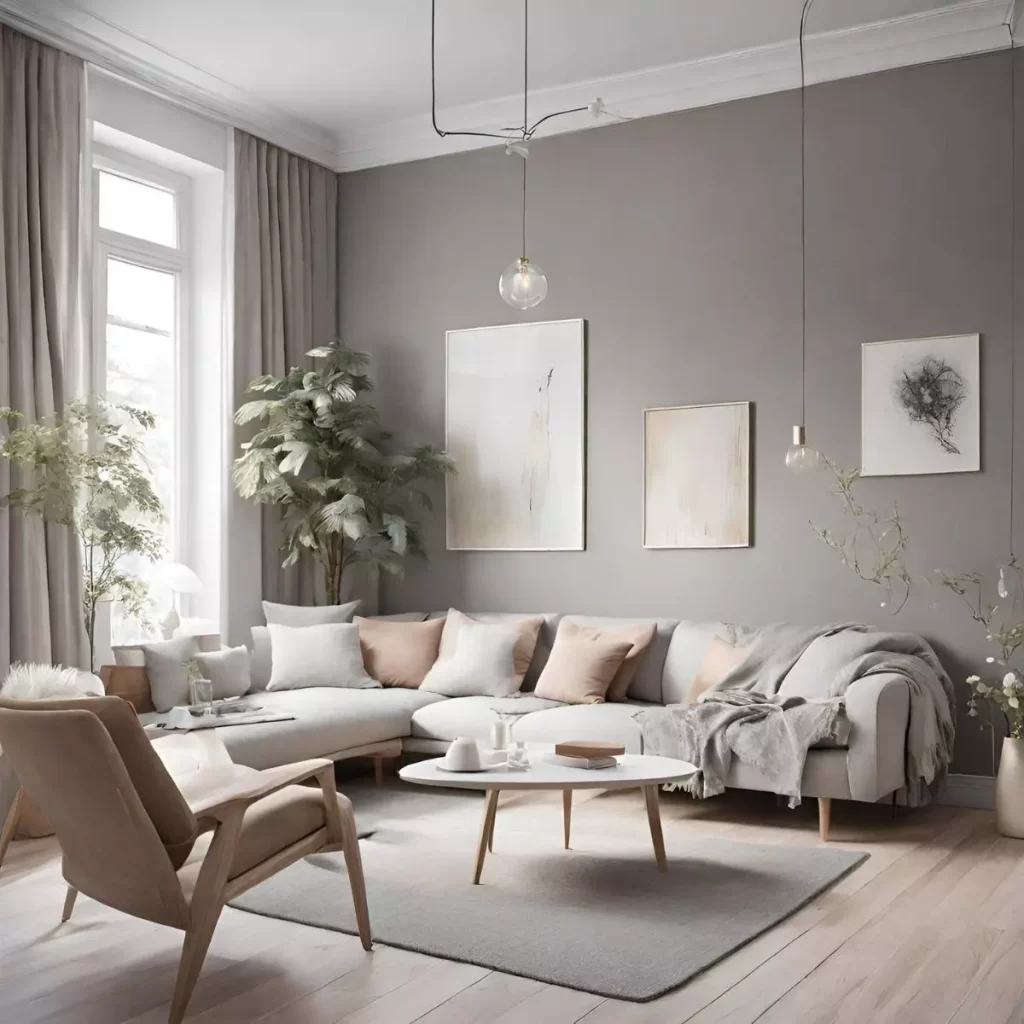
Simplicity is a fundamental pillar of Scandinavian interior design.
It places a premium on uncluttered spaces, where every element has a purpose and contributes to the overall harmony of the room.
The unpretentious, minimalist approach, inspired by the Nordic landscape, creates an atmosphere of calmness.
In Scandinavian interior design, “less is more,” and this simplicity allows for a sense of openness and tranquility in living spaces.
Scandinavian design encourages homeowners to declutter and maintain a sense of order, creating room for a sense of serenity that is characteristic of this style.
Whether you’re designing a cozy bedroom or a functional kitchen, Scandinavian interior design emphasizes simplicity and clarity in every element.
Emphasis on Natural Light:


The significance of natural light in Scandinavian interior design cannot be overstated.
The long, dark winters of the Nordic countries have instilled an appreciation for sunlight.
Large windows, sheer curtains, and strategically placed mirrors are integral to the design’s core principles.
By inviting abundant natural light, Scandinavian design instantly elevates the ambiance of a room.
The play of light and shadow not only makes the space feel more expansive but also connects it with the ever-changing outdoor environment.
This emphasis on natural light not only enhances the visual appeal but also contributes to the well-being of the inhabitants.
Neutral Color Palette for a Serene Ambiance:
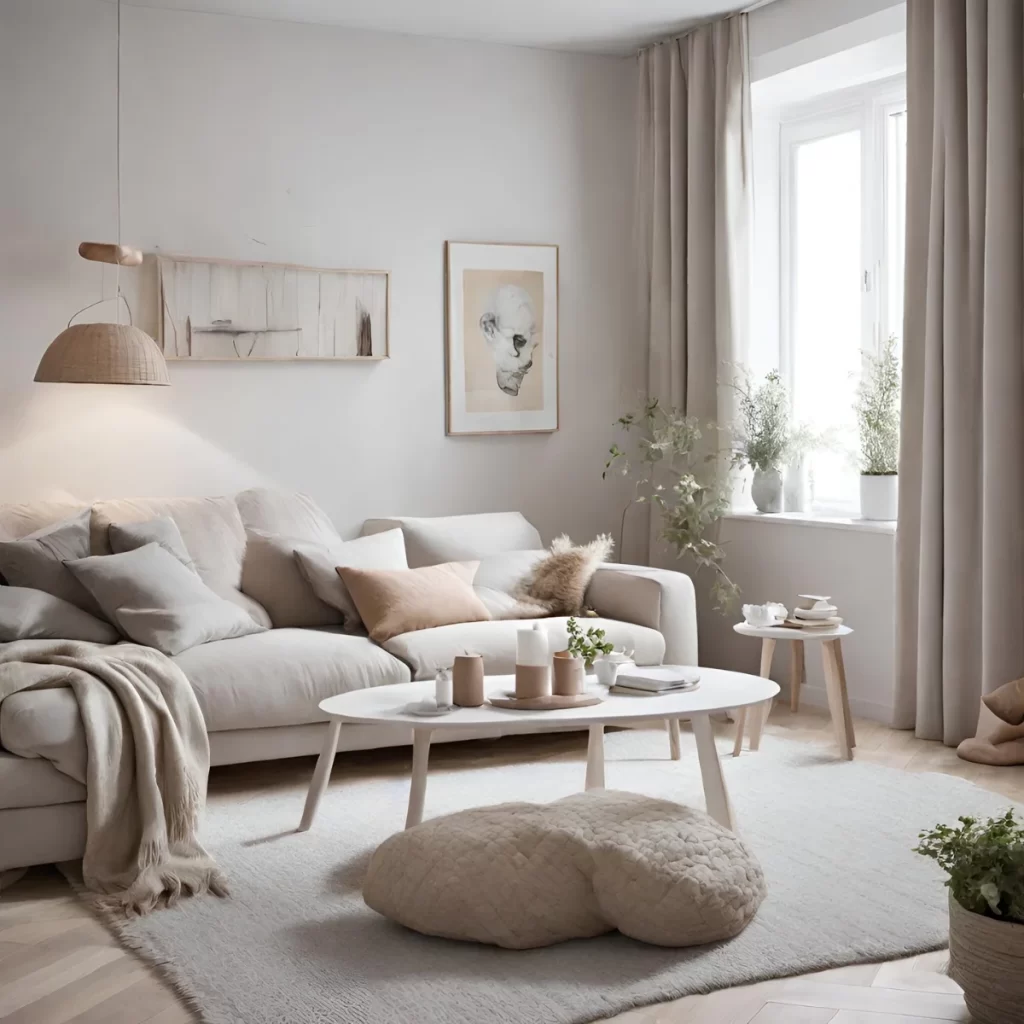

A hallmark of Scandinavian design is its reliance on a neutral color palette.
Whites, grays, soft pastels, and muted earth tones dominate the color scheme, creating a serene and inviting atmosphere.
These hues form the perfect backdrop for the natural light to play its magic, infusing each room with a sense of freshness and space.
The neutral colors also make the space feel more open and adaptable, allowing homeowners to introduce pops of color or personality through furniture and décor.
This combination of neutrality and selective use of colors gives the design a timeless and universally appealing quality.
Functional and Practical Aspects of Scandinavian Design:

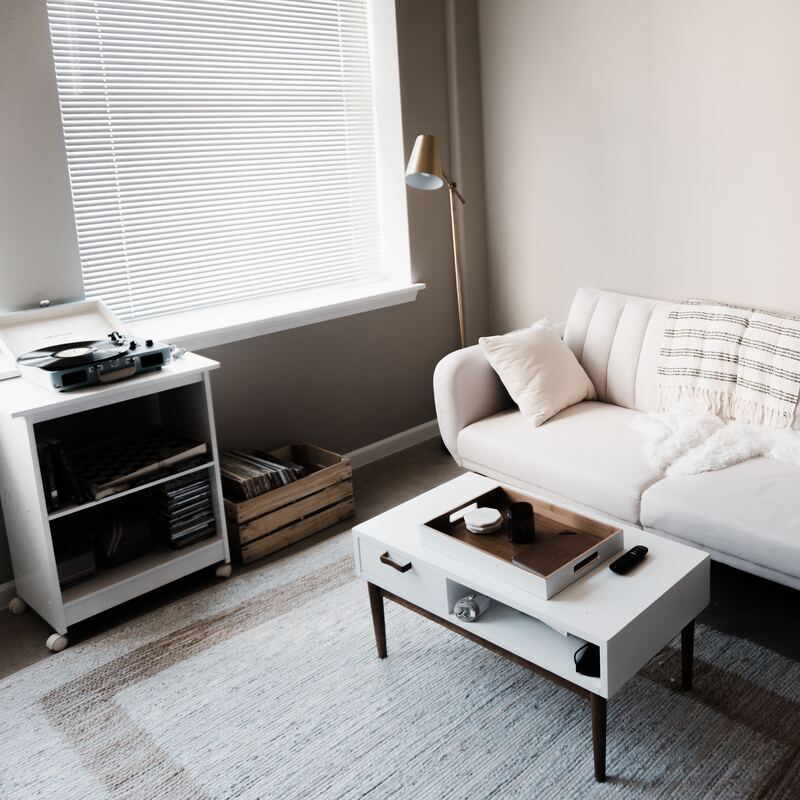
Beyond aesthetics, Scandinavian interior design prioritizes functionality and practicality.
Furniture and décor serve a dual purpose: they are not merely visually pleasing but also designed to meet the daily needs of the occupants.
From modular shelving units that maximize storage to multifunctional furniture that adapts to changing requirements, this design approach embodies the ethos that beauty should never compromise utility.
It’s about creating spaces that work seamlessly with the rhythms of modern life, where every item and arrangement has a purpose.
In embracing the core principles of Scandinavian interior design, you can transform your living spaces into serene and inviting havens, where simplicity, natural light, a neutral color palette, and practicality harmonize to create a timeless and universally beloved atmosphere.
II. Key Elements of Scandinavian Interior Design


Scandinavian interior design is much more than just a visually appealing style; it’s a lifestyle that prioritizes comfort, aesthetics, and a harmonious relationship with nature.
In this section, we’ll delve into the key elements that give Scandinavian interior design its unique character.
The Role of “Hygge” in Scandinavian Interior Design:


The concept of “hygge” is at the heart of Scandinavian interior design.
Pronounced “hoo-guh,” this Danish term encapsulates the essence of creating warmth, comfort, and coziness in living spaces.
Hygge is about savoring the simple pleasures of life and appreciating the small, delightful moments.
In Scandinavian interior design, hygge is the thread that weaves through every room.
It’s about creating a space where you can unwind, relax, and enjoy the company of loved ones.
Soft, warm textiles like woolen throws and plush cushions are integral to achieving hygge.
Candles, with their soft, flickering light, also play a pivotal role in setting a soothing and intimate ambiance.
Scandinavian interior design, with its focus on hygge, invites you to embrace life’s little comforts and elevate your living space into a sanctuary of contentment.
Natural Materials in Scandinavian Design:


The use of natural materials is a hallmark of Scandinavian interior design.
Wood, stone, leather, and other organic elements are employed to establish a deep connection with nature.
Wood, in particular, is a star player, gracing floors, furniture, and exposed beams.
It brings a warm and welcoming feel, juxtaposed with the coolness of stone and the timeless elegance of leather.
Natural materials are celebrated for their durability and their capacity to develop character and charm with age.

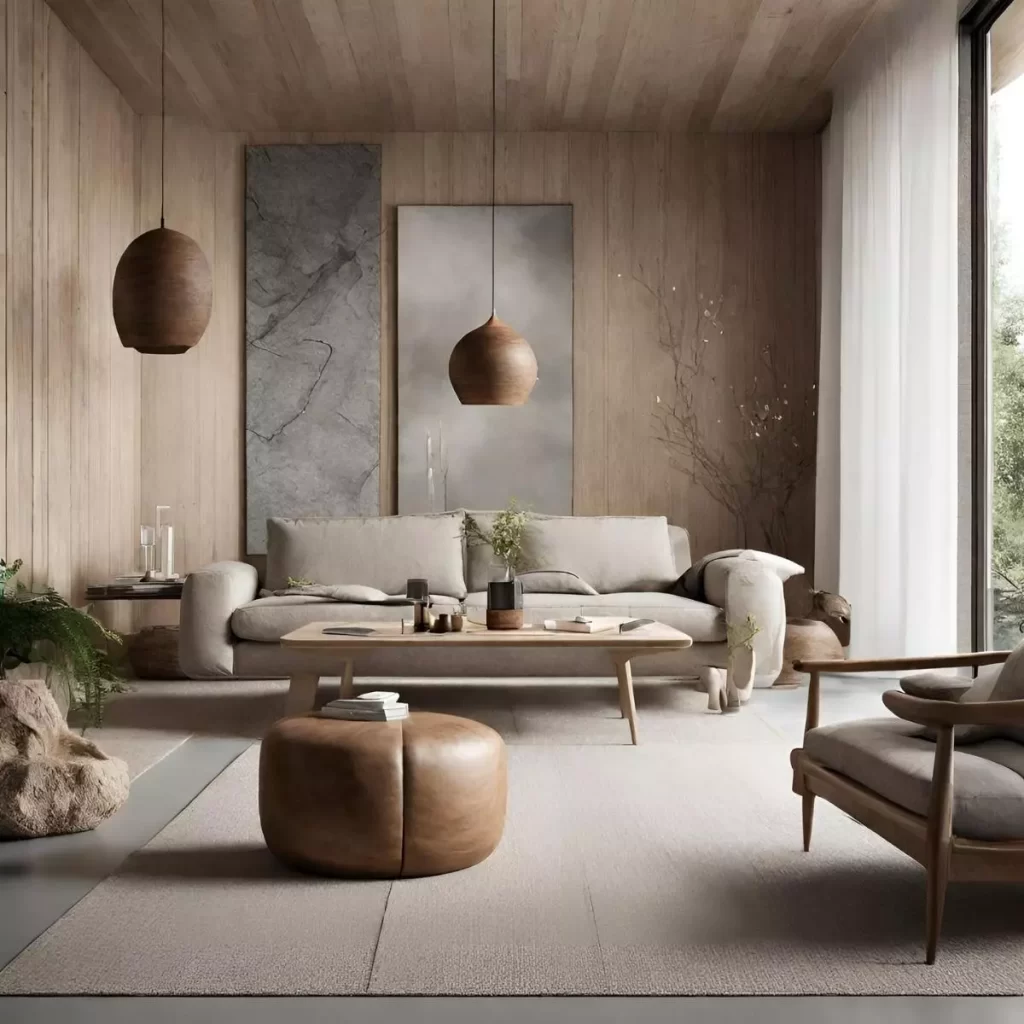
In Scandinavian design, these materials aren’t just about aesthetics; they also convey a sense of integrity and authenticity.
Scandinavian interior design invites you to surround yourself with the beauty of nature, transforming your home into a space that’s not just visually appealing but also profoundly comforting.
Minimalist Decor: Achieving Scandinavian Aesthetics:


The essence of Scandinavian interior design lies in its minimalist decor.
Each piece of furniture and every decoration is thoughtfully chosen and serves a specific purpose.
Minimalism is about streamlining and creating uncluttered spaces.
In a world filled with noise and distractions, minimalist decor allows for a tranquil environment where you can relax and rejuvenate.
Simplicity in design is not just an aesthetic choice but a lifestyle approach.
By reducing the visual noise, Scandinavian design emphasizes clarity, functionality, and a deep appreciation for essential elements.
This results in interiors that are both stylish and inherently practical.
Incorporating these key elements of Scandinavian interior design — hygge, the use of natural materials, and minimalist decor — allows you to craft a living space that radiates comfort, timeless elegance, and a deep connection to nature.
These elements not only define the aesthetics but also enhance the quality of life within your home, making it a true embodiment of Scandinavian design principles.
III. Practical Tips for Achieving Scandinavian Design

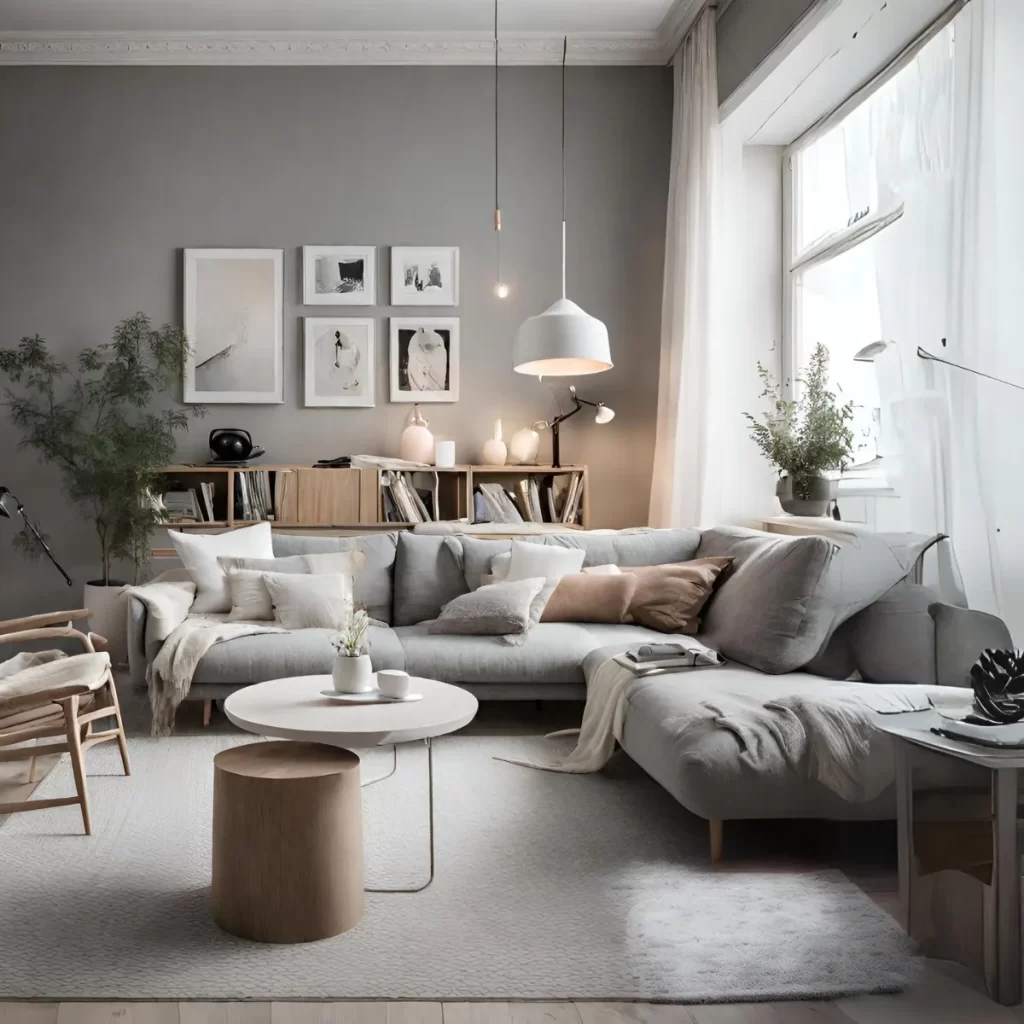
Achieving the essence of Scandinavian interior design isn’t just about understanding its principles; it’s also about applying them effectively in your living spaces.
Here are some practical tips to help you infuse your home with the timeless beauty of Scandinavian design.
Emphasize Decluttering and the “Less Is More” Approach:
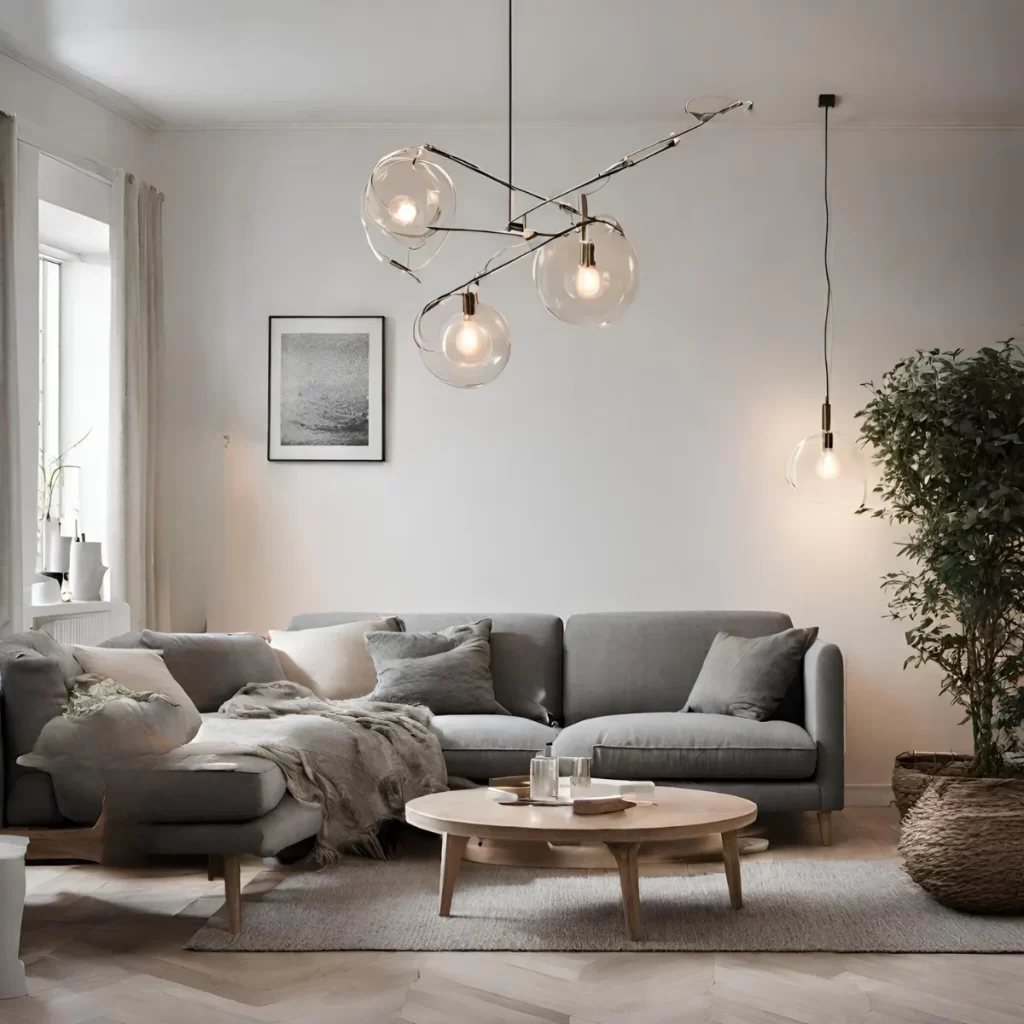
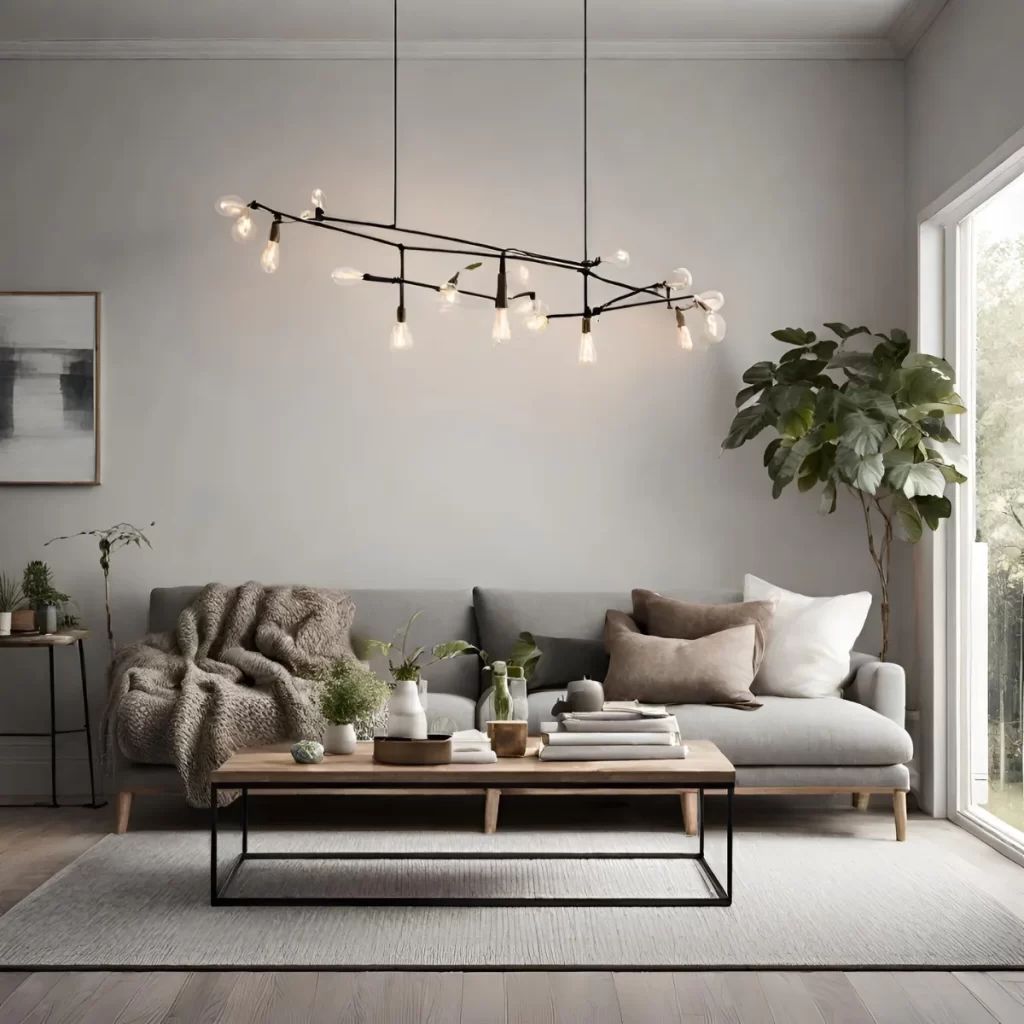
Scandinavian interior design is all about simplicity and uncluttered spaces.
To embrace this ethos, start by decluttering your living areas.
Keep only what’s necessary and eliminate items that don’t serve a clear purpose.
The “less is more” philosophy invites you to create an environment where every piece has a distinct role in enhancing the aesthetics and functionality of the space.
Consider storage solutions like sleek, modular shelving units or built-in TV cabinets to keep your space organized.
Storage that seamlessly integrates with the design helps maintain the uncluttered feel of Scandinavian interiors.
By emphasizing the “less is more” approach, you’ll effortlessly bring the core principles of Scandinavian interior design into your home, creating a clean, serene ambiance.
Significance of Textures in Scandinavian Interiors:
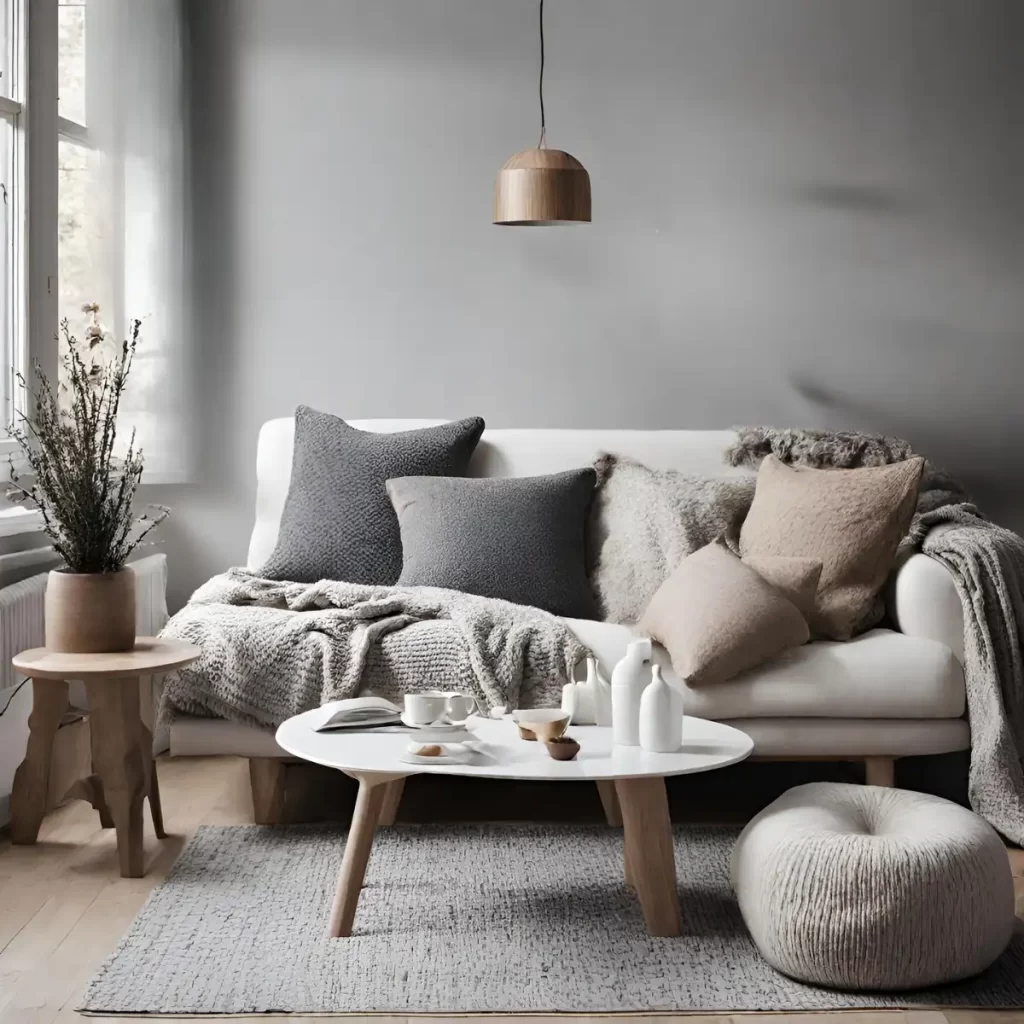

Textures play a pivotal role in the warmth and depth of Scandinavian design.
In this style, textures are celebrated for their ability to add interest and comfort to the space.
Incorporate a variety of textures, such as soft cotton, rustic wood, smooth metal, and cozy wool, to create a sense of depth and visual appeal.
For instance, place a woolen rug on a sleek, wooden floor or add a tactile element with knitted throw blankets and cushions.
By doing so, you infuse your home with a sense of coziness and tactile richness that defines Scandinavian interiors.
The careful layering of textures not only enhances the aesthetics but also makes the space inviting and comfortable.
Incorporate Greenery and Natural Elements:
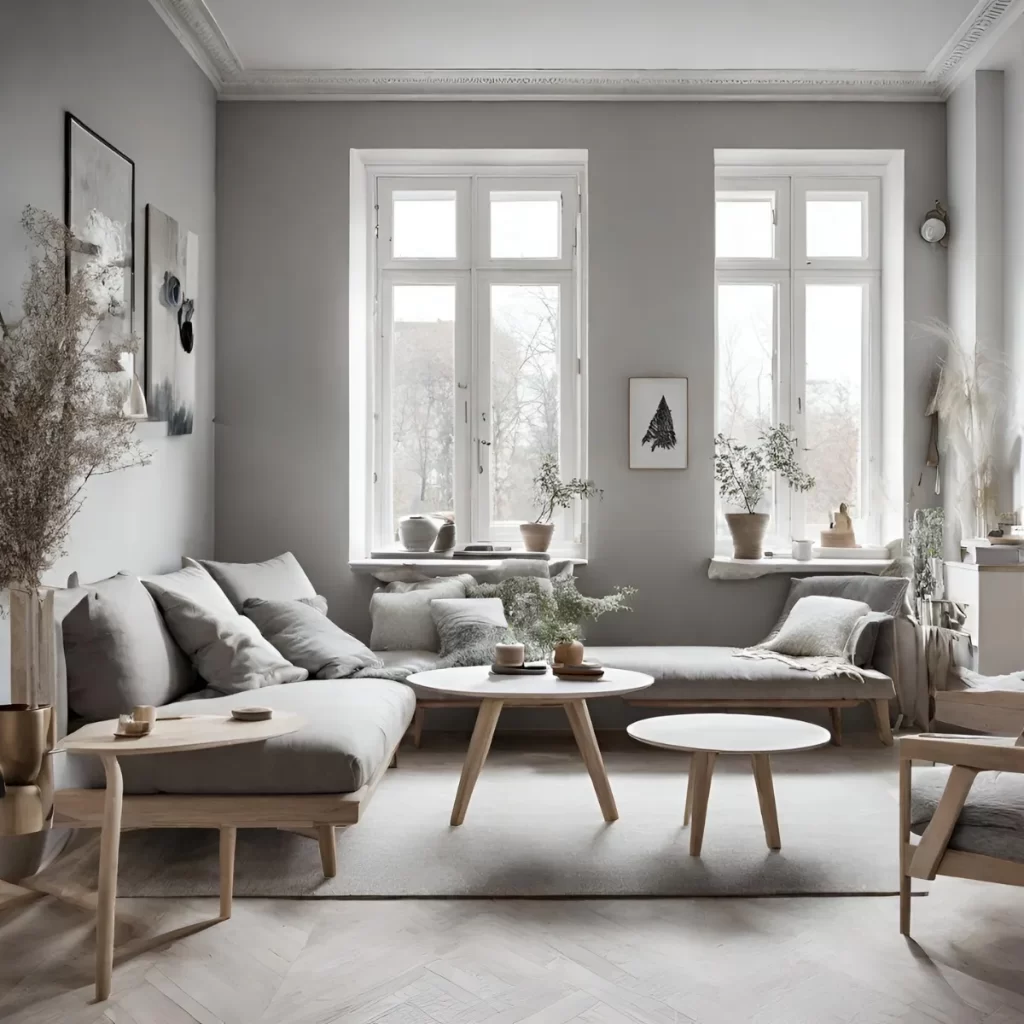

Connecting with nature is at the heart of Scandinavian interior design.
One way to achieve this is by incorporating greenery and natural elements.
Potted plants, fresh flowers, and indoor gardens are excellent additions to Scandinavian spaces.
Choose indoor plants that are easy to maintain, such as succulents or snake plants.
They not only purify the air but also bring life and vitality to the room.
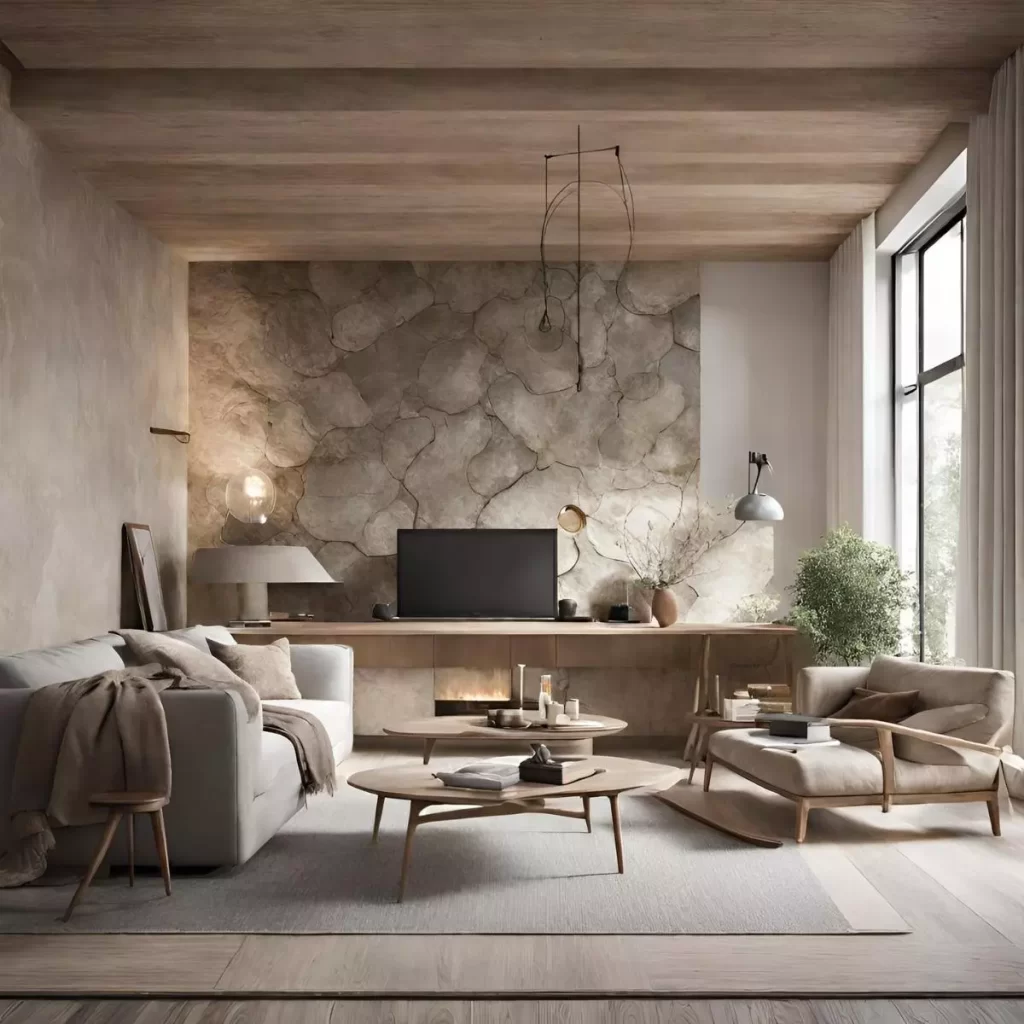

Additionally, consider using natural materials like wooden furniture, stone countertops, and leather upholstery to create a stronger bond with the natural world.
These natural elements not only enhance the aesthetics but also foster a sense of harmony and well-being within your home.
Choosing Functional and Aesthetically Pleasing Lighting:
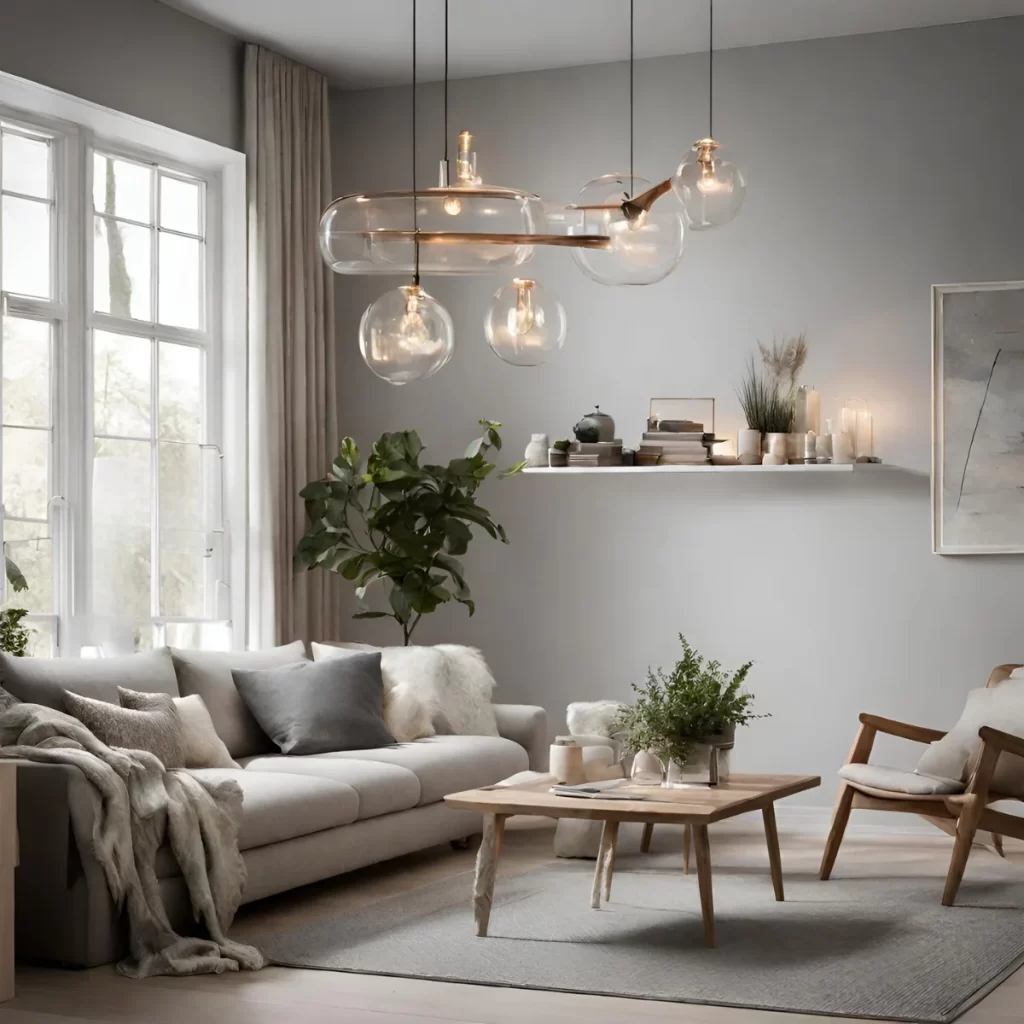
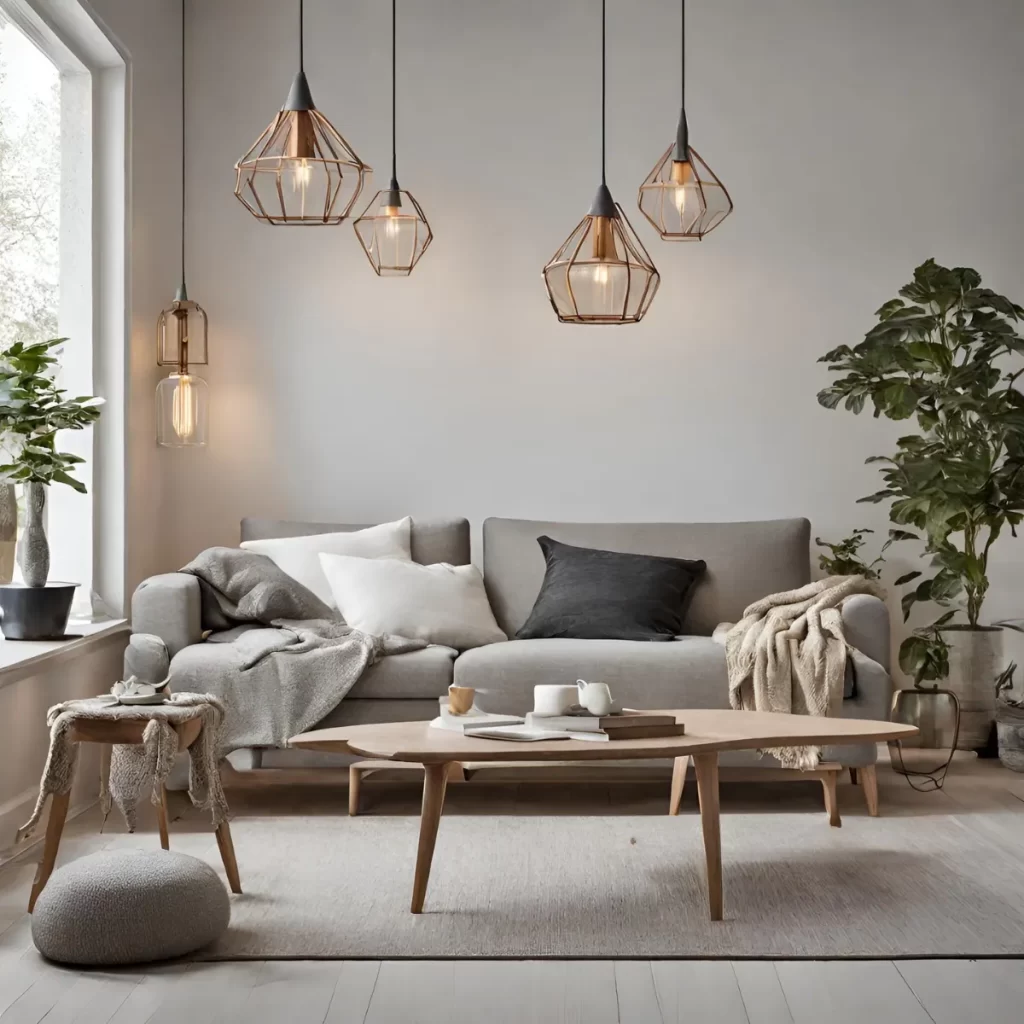
Lighting is a critical aspect of Scandinavian interior design.
In Scandinavian homes, the goal is to maximize natural light.
To achieve this, opt for sheer curtains or blinds that allow daylight to flood your rooms.


In the evenings, embrace functional yet aesthetically pleasing lighting fixtures.
Pendant lights, floor lamps, and wall sconces are popular choices.
These fixtures not only provide illumination but also serve as striking design elements.
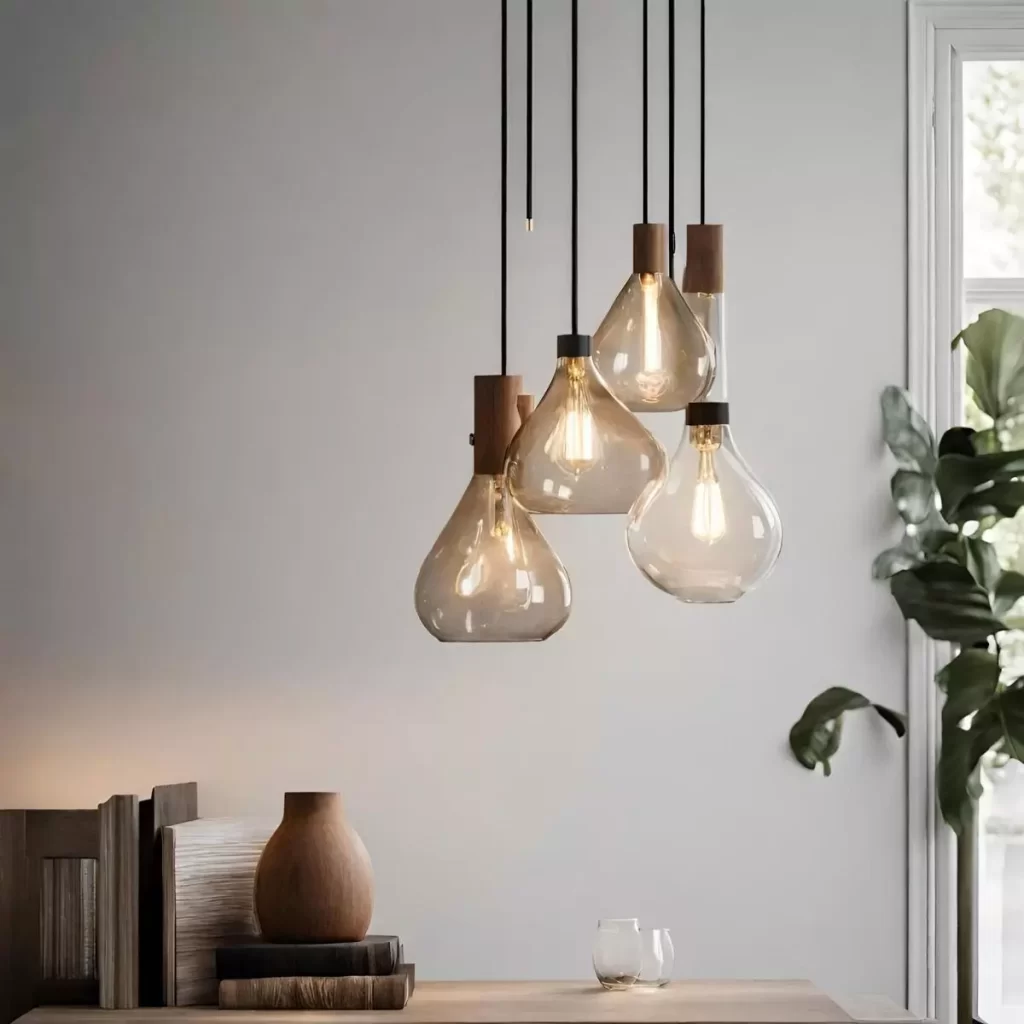

Look for lighting with clean lines and a timeless aesthetic that complements the minimalist decor.
This way, you’ll create a serene ambiance in your home, whether it’s day or night.
By following these practical tips, you can seamlessly infuse the essence of Scandinavian interior design into your living spaces.
The emphasis on decluttering, the artful use of textures, the incorporation of greenery and natural elements, and the selection of functional and aesthetically pleasing lighting will help you create a home that exudes the timeless beauty and serenity of Scandinavian design.
IV. Scandinavian Design in Different Rooms
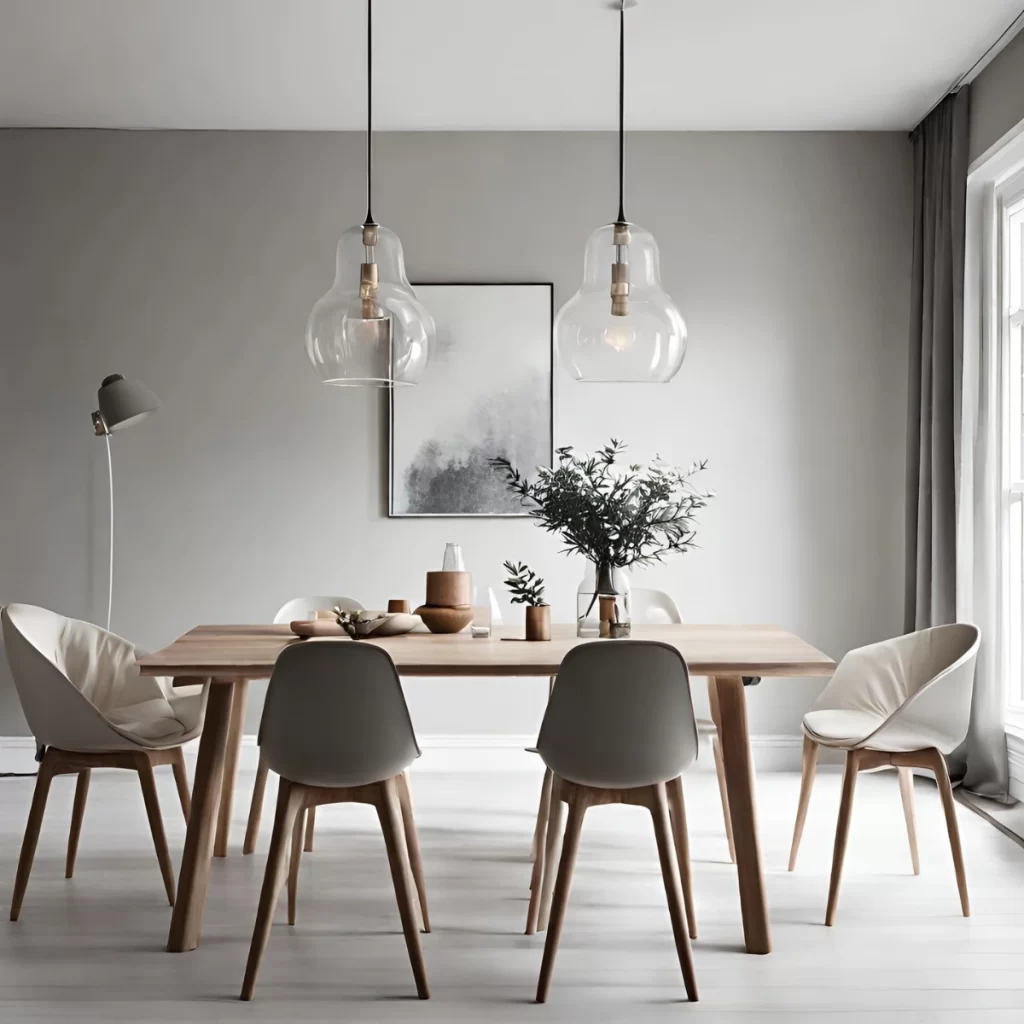

Scandinavian interior design is versatile and can be applied to every room in your home, transforming each space into a sanctuary of timeless elegance.
Let’s explore how to bring the essence of Scandinavian design into various rooms:
Applying Scandinavian Design Principles in Living Rooms:


The living room is often the heart of the home, and Scandinavian interior design can make it a warm and inviting space.
Start with a neutral color palette dominated by whites, soft grays, and pastels.
Incorporate cozy textures like woolen throws and plush cushions to create a comfortable ambiance.
Choose minimalist yet comfortable furniture with sleek lines and natural materials.
Wooden coffee tables, modular seating, and functional storage units are excellent choices.
Allow natural light to flood the room through large windows, and consider adding a statement lighting fixture that complements the design.
To add a touch of nature, introduce potted plants and display natural elements, such as wooden bowls or stone sculptures.
Keep the decor minimal but impactful, focusing on a few carefully chosen pieces of artwork.
Creating a Scandinavian Kitchen and Dining Area:
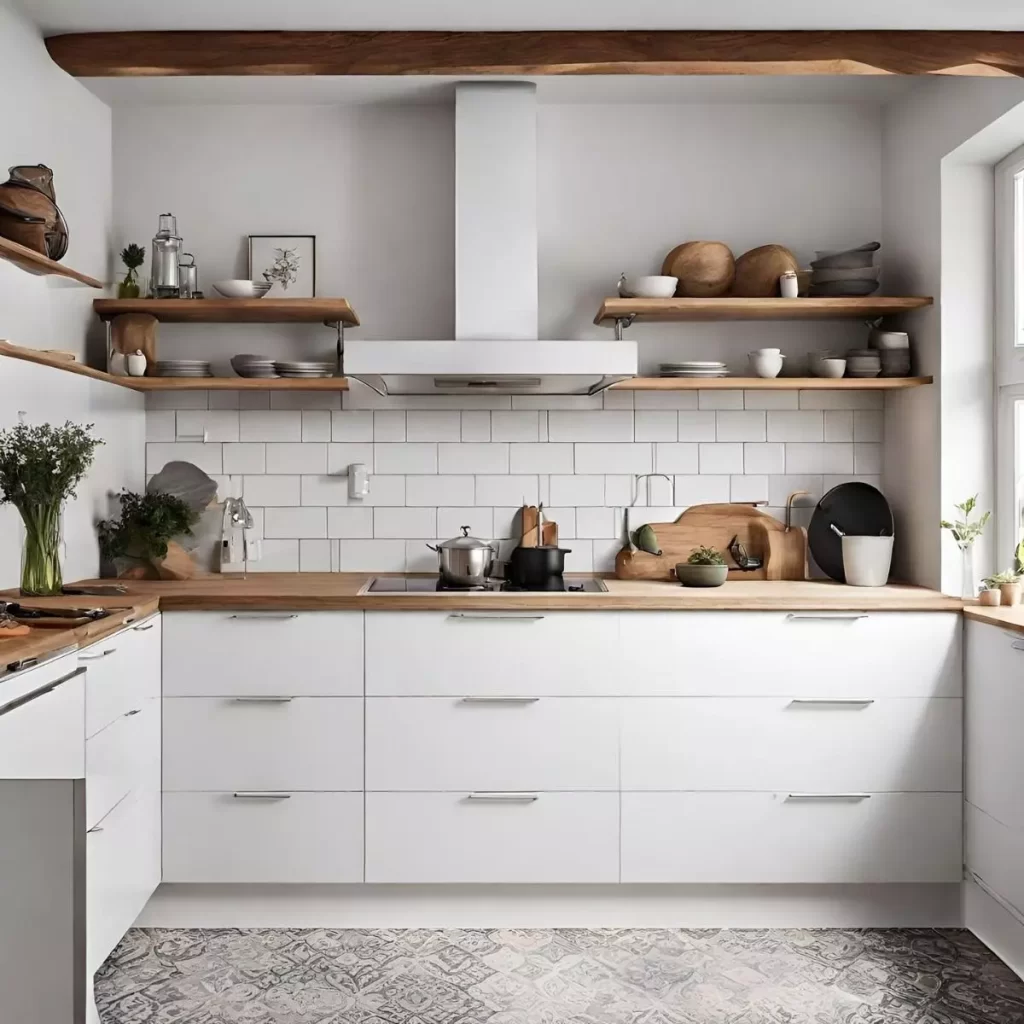

Scandinavian design principles can be seamlessly integrated into kitchens and dining areas.
In the kitchen, opt for clean, white cabinetry, and countertops to maintain a bright and airy feel.
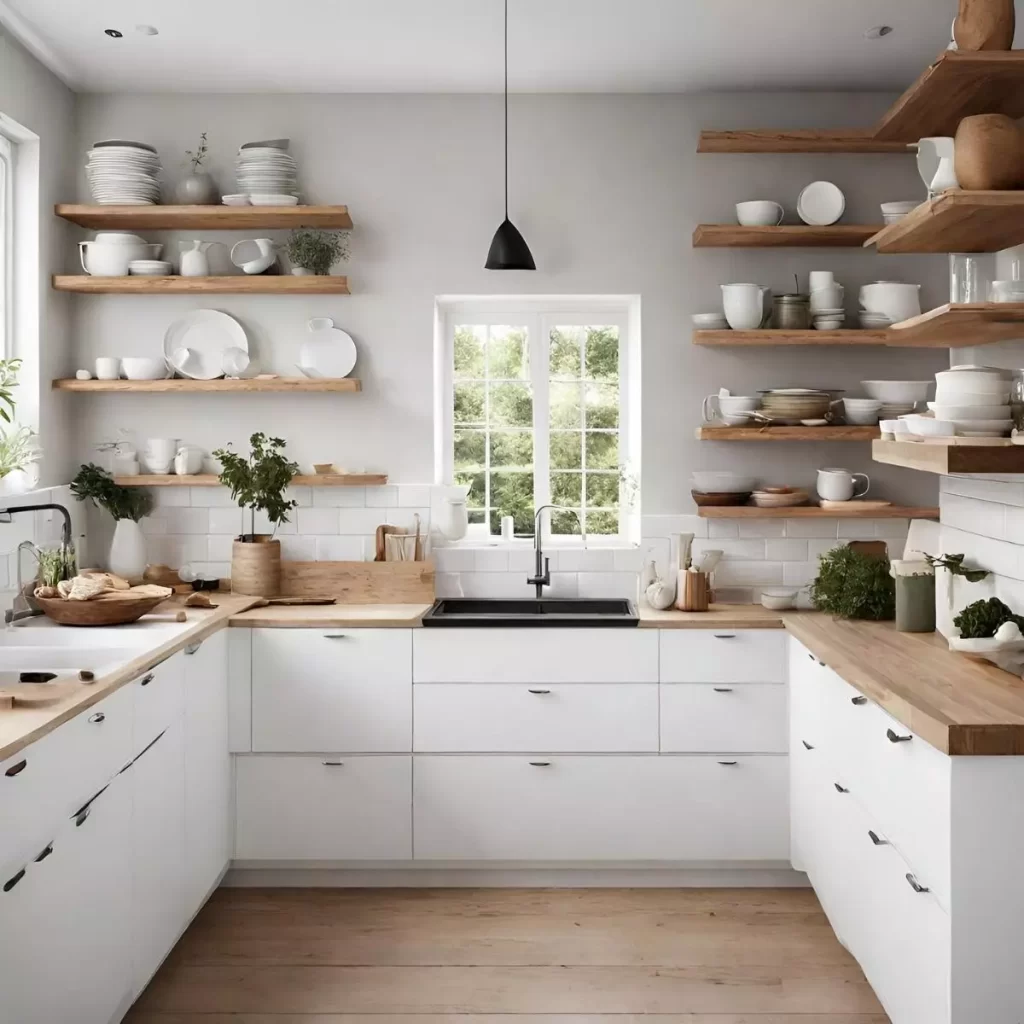

Wooden or stone countertops add warmth and texture to the space.
Open shelving is a practical choice for displaying functional and decorative items.
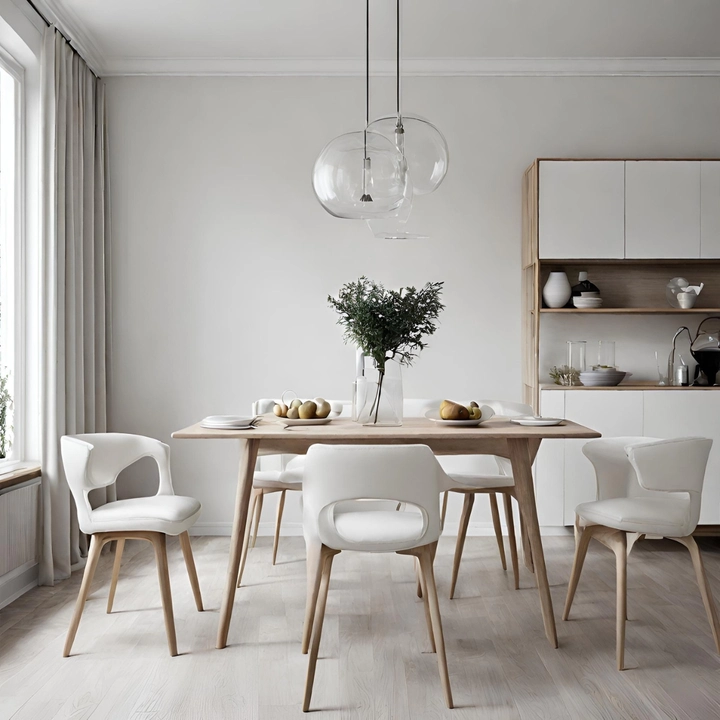

For the dining area, choose a wooden dining table with simple lines and pair it with chairs featuring natural materials like leather or woven fibers.
Consider pendant lights with clean and modern designs to illuminate the dining space.
The combination of functionality and aesthetics is key in Scandinavian kitchens and dining areas, creating a practical yet stylish environment.
Key Features of Scandinavian Bedrooms and Bathrooms:


Scandinavian bedrooms are designed for tranquility and comfort.
Start with a minimalist bed frame and neutral bedding.
Add layers of soft textures with bed backs, throws, and cushions, and opt for nightstands with storage for a clutter-free look.


Keep the color palette subdued, but feel free to introduce muted colors or soft patterns through textiles.
Incorporate ambient lighting with bedside table lamps or wall-mounted fixtures.
A large mirror can make the room appear more spacious and reflective of natural light.


In Scandinavian bathrooms, simplicity and functionality reign supreme.
Choose white or neutral tiles for a clean, timeless look.
Wooden accents can be introduced through the vanity or storage units.
Minimalist and sleek fixtures and fittings add to the contemporary feel.
Add a touch of luxury and comfort with soft, fluffy towels, and consider incorporating plant life through potted plants or fresh flowers.
This infusion of nature creates a harmonious atmosphere in the bathroom.
In each room, the principles of Scandinavian interior design are applied with a focus on simplicity, functionality, and a connection to nature.
Whether it’s a cozy living room, a practical kitchen and dining area, or a serene bedroom and bathroom, the elegance of Scandinavian design transcends the boundaries of individual spaces, creating a unified and inviting home environment.
V. Merging Scandinavian Interior Design with Various Design Styles:


Interior design is a creative playground where different styles can harmoniously coexist.
Scandinavian interior design provides a versatile backdrop for merging with a variety of styles.
Let’s briefly explore the distinctions between Scandinavian design and styles such as Bohemian, rustic, Mediterranean, and contemporary, and how to combine each of these styles with the Scandinavian aesthetic.
Scandinavian and Bohemian Fusion:


Scandinavian and Bohemian design styles offer unique elements that can be creatively combined.
The Scandinavian style is known for its simplicity and minimalism, while Bohemian design embraces eclecticism and vibrant colors.
To merge these two styles creatively, you can blend Scandinavian simplicity with Bohemian’s vibrant décor.
Think of introducing Bohemian-style rugs, cushions, and decorative elements into a primarily Scandinavian design to add character and warmth to the space.
Scandinavian and Rustic Blend:


Combining Scandinavian simplicity with rustic coziness is a creative approach to interior design.
Scandinavian design emphasizes clean lines and neutral colors, while rustic design celebrates the charm of wood and earthy elements.
To merge these styles creatively, consider introducing rustic wooden furniture and elements into a predominantly Scandinavian design.
This blend can create a harmonious fusion of modern simplicity and country charm.
Scandinavian and Mediterranean Harmony:


Merging Scandinavian serenity with Mediterranean vibrancy is a creative endeavor.
Scandinavian design prioritizes natural light and a minimalistic color palette, while Mediterranean design features warm earthy colors and elements reminiscent of the coastal Mediterranean region.
To creatively combine these styles, you can introduce Mediterranean elements like terracotta tiles, warm earthy colors, and wrought iron accents into a predominantly Scandinavian design.
This fusion adds a sense of vacation-inspired tranquility to your living space.
Scandinavian and Contemporary Union:
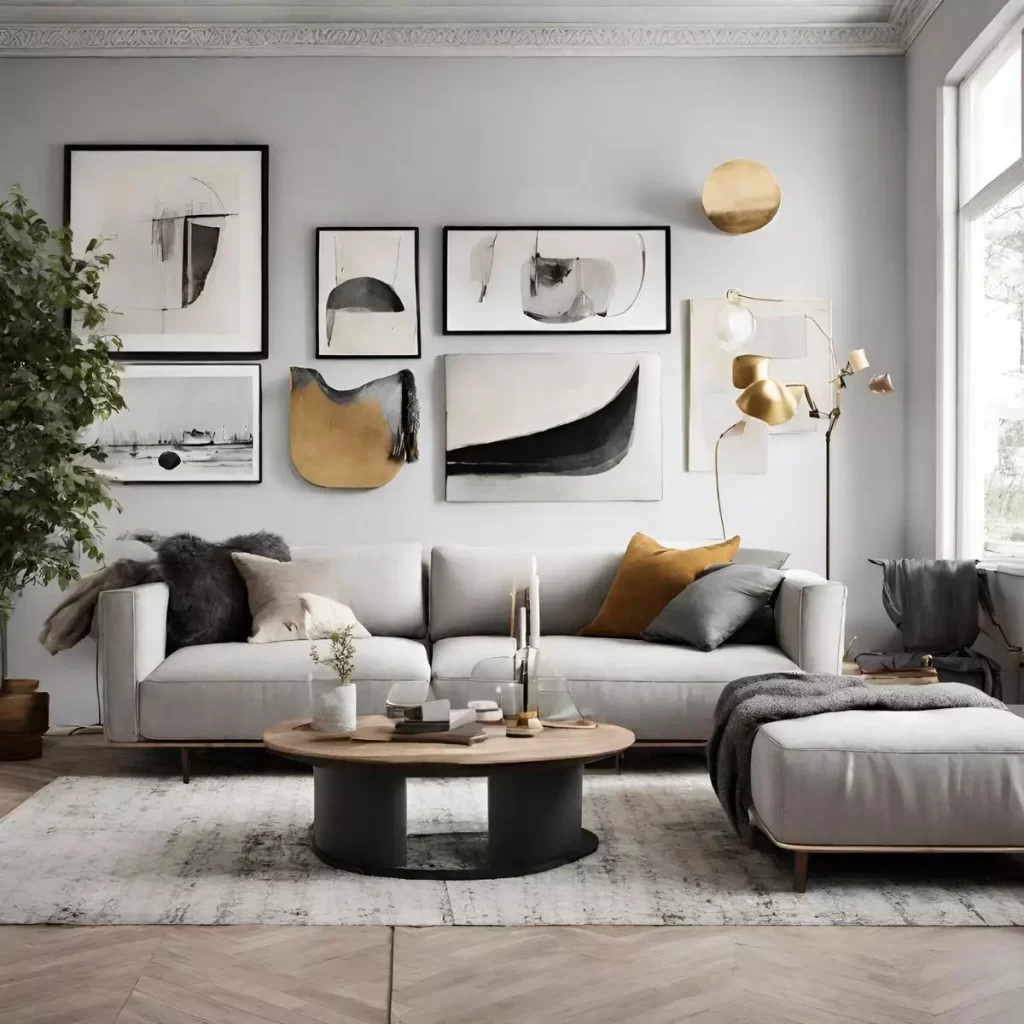
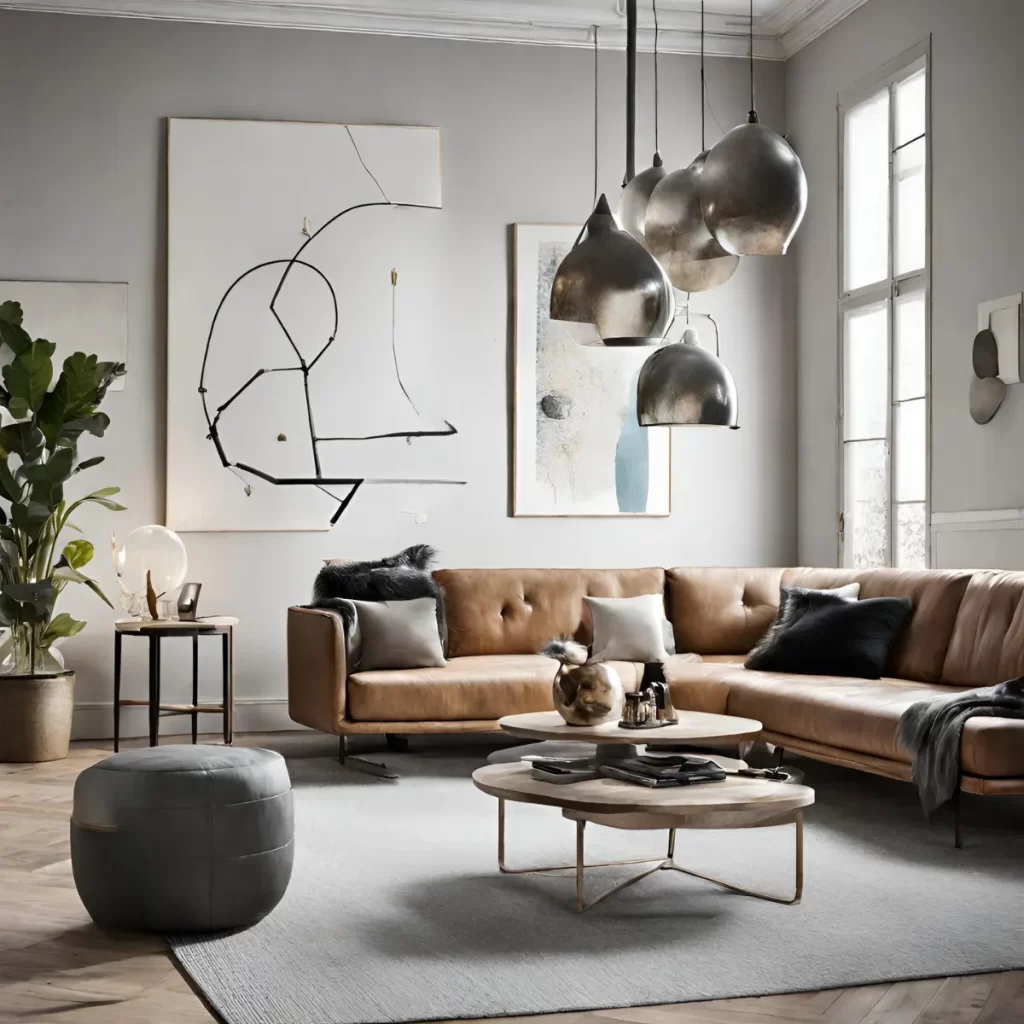
Combining contemporary aesthetics with Scandinavian grace is an exciting creative challenge.
Scandinavian design is characterized by its simplicity, while contemporary design emphasizes sleek lines and innovative materials.
To merge these styles creatively, use contemporary furniture pieces in a predominantly Scandinavian setting.
Keep the environment minimalistic and uncluttered while introducing bold contemporary art, metallic accents, and innovative lighting to create a captivating blend of styles.
Merging Scandinavian interior design with various styles allows for the creation of unique, personalized spaces that reflect your tastes and preferences while preserving the timeless elegance of Scandinavian design.
By thoughtfully selecting elements from different styles and balancing them within the Scandinavian framework, you can create interiors that are both harmonious and visually captivating.
As we conclude, we encourage you to embrace the timeless beauty and practicality of Scandinavian design in your own homes.
It’s a style that invites you to create spaces that are not only aesthetically pleasing but also functional, cozy, and serene.
Whether you live in a bustling city or the serene countryside, Scandinavian design can enhance your living environment, fostering a sense of well-being and tranquility.
So, go ahead and explore the elegance of Scandinavian design, and let it become a part of your home, your life, and your enduring sense of style.

Thank you for your lovely words 🙂
Your post beautifully captures the essence of Scandinavian design, so insightful yet accessible. Loved how you balanced simplicity with warmth. Truly inspiring thank you for sharing!